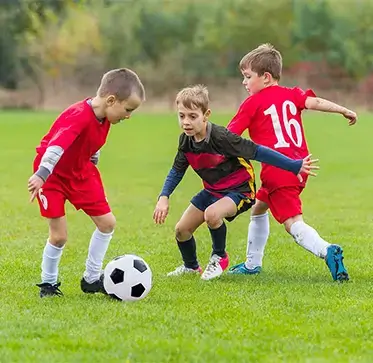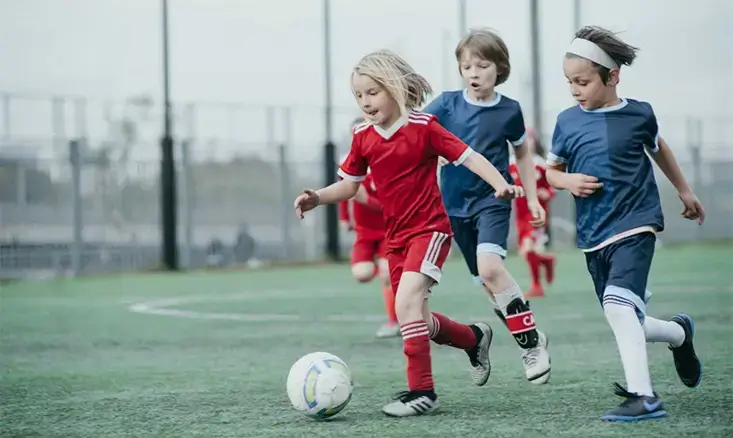Key Areas for Midfield Development: Boosting Youth Soccer Performance the Smart Way

CRFC BLOGS
LATEST BLOGS & NEWSLETTERS
Key Areas for Midfield Development: Boosting Youth Soccer Performance the Smart Way
Midfielders are the engine of any soccer team. Whether your child is 8 or 18, learning the right skills in the middle of the field can transform their game. In this guide, we break down what youth soccer midfielders should focus on to become smarter, faster, and more effective players — backed by science and made simple for parents and coaches to understand.
1. Why Midfielders Matter So Much
Midfielders are like the brain and heart of a soccer team — they connect defense and attack.
- They touch the ball more than most players.
- They make decisions quickly, under pressure.
- They run more than any other position during a game.
Key takeaway: A strong midfielder controls the game. Development here boosts the whole team.
2. Developing Game Awareness
The best midfielders think two steps ahead. That’s called “game intelligence.”
How to build it:
- Watch professional games and pause to predict passes.
- Play small-sided games to force quicker decisions.
- Use video replay to review decision-making in practices.
Bold tip: Train the brain, not just the feet. Smarter players stand out.

3. Improving First Touch
In midfield, the ball often arrives quickly, bouncing or under pressure.
Train your first touch by:
- Receiving passes with different parts of the body: the inside and outside of the foot, and the thigh.
- Using wall passes or rebounders at home or in training.
- Practicing “directional control” — touch the ball where you want it next.
Key takeaway: A great first touch gives time. A poor one gives the ball away.
4. Enhancing Passing Under Pressure
Passing is a midfielder’s superpower, but under pressure, it becomes a different game.
Build better passing by:
- Adding pressure in drills (defenders, time limits).
- Practicing one-touch and two-touch passing daily.
- Varying distances: short, medium, switch-the-field passes.
Bold tip: Accuracy under stress separates average from elite.
5. Building Fitness and Stamina
Midfielders run the most — often 6–8 miles per game at higher levels.
Focus on:
- Interval running (sprint-walk-sprint).
- Agility ladders and cone drills to mimic in-game movement.
- Recovery sessions — sleep, hydration, nutrition.
Key takeaway: A midfielder with stamina can dominate both halves.

6. Strengthening Defensive Skills
Good midfielders can defend just as well as they attack.
Train defensive skills like:
- Interceptions and cutting off passing lanes.
- Tackling without fouling (timing and angle).
- Tracking runners and covering teammates.
Bold tip: Midfielders who defend well earn more minutes. Coaches notice.
7. Mastering Communication
Midfielders organize the team. They tell players where to go and when to press.
Improve communication by:
- Using simple phrases: “Man on!”, “Turn!”, “Switch!”
- Making eye contact and using hand signals.
- Encouraging teammates and staying positive.
Key takeaway: Great midfielders lead with their voice — not just their feet.
8. Developing Ball Retention
Midfield is messy. Losing the ball here often means conceding goals.
Improve retention by:
- Practicing shielding and body positioning.
- Using your body between the ball and defender.
- Dribbling in tight spaces (e.g., 1v1 or Rondo drills).
Bold tip: A midfielder who rarely loses the ball becomes a coach’s favorite.
9. Expanding Vision and Switching Play
Seeing the whole field is an underrated skill in youth soccer.
Train vision by:
- Scanning (head on a swivel) before receiving the ball.
- Practicing long-range passing with both feet.
- Playing “one-look” games — making decisions quickly with a single scan.
Key takeaway: Vision opens up the game. It creates scoring chances out of nothing.

10. Building Mental Toughness
Pressure, mistakes, bad games — midfielders deal with them all.
Build resilience by:
- Practicing mindfulness or deep breathing before games.
- Reflecting on games to improve, not criticize.
- Setting small, achievable goals each week.
Bold tip: The best midfielders bounce back fast. Confidence is built, not born.
Conclusion: Shaping a Complete Midfielder
Whether your child plays defensive mid, attacking mid, or box-to-box, the development principles remain the same:
- Smart decisions
- Technical sharpness
- Elite fitness
- Strong communication
- Mental strength
Each small improvement adds up over time. Encourage consistent effort, reward smart play, and celebrate progress — not just goals.
Want More Local Youth Soccer Tips?
If you’re in Charlotte, NC or nearby, follow Rise FC’s blog and social pages for expert training advice, local camp updates, and player development tips year-round.
Explore our youth soccer camps in Charlotte, Matthews, and Waxhaw.
Frequently Asked Questions About Youth Soccer Midfielders
1. What skills should a young soccer midfielder focus on?
Young midfielders should focus on passing, first touch, game awareness, stamina, and communication. These skills help them stay calm under pressure and control the game’s pace.
2. How can I help my child become a better midfielder?
Watch games together, practice small-sided drills at home, and encourage decision-making activities like 1v1s or rondos. Support their mental and physical development equally.
3. How much running does a midfielder do in a game?
Youth midfielders may run 3–6 miles per game, depending on age and playing level. Fitness training and recovery are key for consistent performance.
4. What age is best to start training as a midfielder?
Kids can start learning midfield skills as early as age 6–7. Focus on fun, control, and awareness first — advanced tactics come later.
5. How do I know if midfield is the right position for my child?
If your child likes to touch the ball often, make decisions, and help both defense and offense, midfield could be a great fit.

Did you find this useful?


